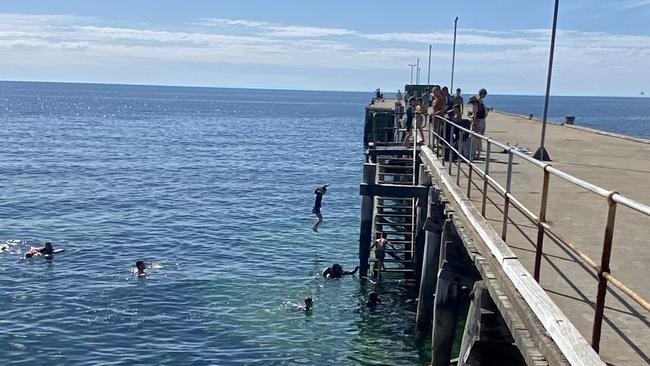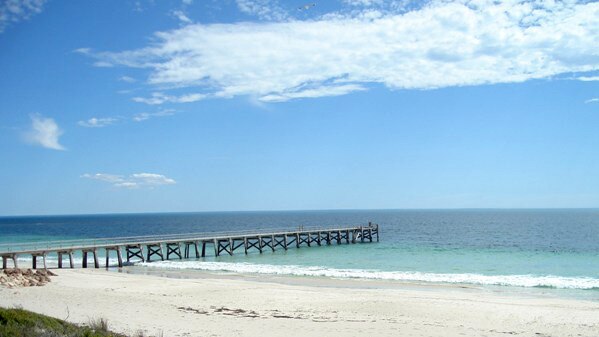LGA SA seeks $10m for jetties from the state government and immediate release of the SA Jetties Strategic Plan
Coastal councils are crying out for help to repair and upgrade jetties, so the Local Government Association is pitching for a cool $10m this state election.
SA News
Don't miss out on the headlines from SA News. Followed categories will be added to My News.
Jetties are falling into disrepair all the way around the South Australian coastline, from Robe to Kangaroo Island and Yorkes to Ceduna, prompting a call for more state government funding.
The Local Government Association of SA has asked for an extra $10m from the state government to maintain and upgrade ageing jetties.
They’re also demanding that the immediate release of the state’s Jetties Strategic Plan, which was prepared in 2019 and still has not seen the light of day.
SA councils have care and control of 36 jetties and wharves. These have been built on state government land but are leased to councils, and the lease agreements are due to expire in the next few years.
These councils already spend a combined $2m a year maintaining state and council owned jetties.
LGA president Angela Evans said the financial burden was unfair, particularly in regional councils with a small ratepayer base. Some councils are responsible for multiple jetties, while others have one or two.
“Whether it’s for fishing, boating, diving, swimming, or just taking in a beautiful sunset, jetties are the heart of many regional towns,” Ms Evans said. “As a state we must invest in them, and make sure they can be enjoyed by future generations.”

Yorke Peninsula Council has 11 jetties: Wool Bay; Stansbury; Port Victoria; Point Turton; Marion Bay; Edithburgh; Sultana Point; Ardrossan; Port Rickaby; Port Julia; and Port Vincent.
Local scuba-diving enthusiast and long-term jetties advocate Reg Foster prompted the development of the Jetties Strategic Plan, after having “spoken to everyone including the Scuba Federation of SA and the Department of Transport and Infrastructure” before finally writing to the Minister.
He said many people did not realise the significance of the town of Edithburgh, and the Edithburgh jetty, for scuba diving.

“In past decades, the Edithburgh jetty was used by all of SA’s scuba-diving businesses as a training site in winter because of its unique, protected conditions,” Mr Foster said.
“Training courses would be held 20-30 times a year, and after they completed the course, students would go back there to practice, stay in local accommodation and buy food from local businesses.
“It is also an internationally renowned dive site because of the biodiversity there – you can see an incredible diversity of species, including water corals and sponges, and the iconic leafy seadragon – and the photo and video opportunities that close to the shoreline, you just don’t get that anywhere else.”
But now, he said, it was so rundown that most diving business avoided it. “Damage to the steps used to enter the water mean it’s no longer a safe option for beginners,” he said.

Infrastructure Minister Corey Wingard said the state government had “already injected $40m into jetty upgrades and other projects across the state because we know how important these iconic walkways are to regional communities and for local tourism”.
“We remain in discussions with stakeholders and relevant councils about the SA Jetties Strategic Plan which will be released for consultation following the consideration of a clear and joint state government and council operating model,” he said.
Opposition Infrastructure spokesman Tom Koutsantonis said: “Labor understands how important jetties are to regional communities, particularly for local fishing and tourism businesses, which is why we are committed to working with Local Government to improve this important infrastructure across our State.
“It is disappointing that the Marshall Liberal Government are keeping secret the Jetties Strategic Plan, this should have been released years ago,” he said.
“However, it has been a common practice by the current government to either hide these reports from the public or use Cabinet Confidentiality to block the release of documents via FOI.”



